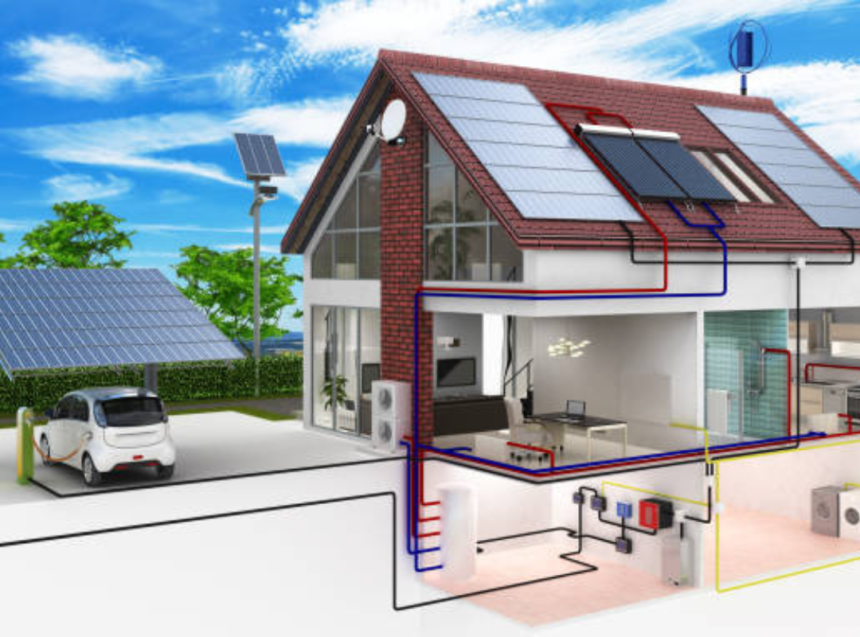As electric vehicles (EVs) continue to reshape the transportation landscape, homeowners are increasingly recognizing the importance of integrating EV infrastructure into their home designs. Building a home that’s ready for electric vehicles is more than just a passing trend it represents a forward-thinking investment in sustainability, convenience, and long-term financial savings. With the rapid growth of EV adoption, preparing your home for this shift can significantly enhance property value while minimizing the potential cost and disruption of future retrofitting. Proactively designing for EV readiness ensures that your home stays relevant, energy-efficient, and adaptable to evolving technological advancements.
Why Building a Home with EV Readiness Matters
The shift to electric vehicles accelerates globally, driven by environmental concerns, technological advancements, and government incentives. Homeowners planning for new constructions can benefit significantly by incorporating EV charging capabilities during the building phase. This not only avoids the expense and disruption of post-construction modifications but also aligns the home with emerging buyer preferences.
When building a home, integrating an EV charger ensures seamless charging, offering convenience right from your driveway. Many EV owners prefer Level 2 chargers, which require a 240-volt outlet. Planning for this during construction simplifies installation, reduces costs, and allows for higher energy efficiency.
Key Considerations When Building a Home for EV Compatibility
To successfully incorporate EV infrastructure, several factors must be addressed during the planning and design phase.
Electrical Capacity and Panel Upgrades
One of the first steps in building a home that supports electric vehicles is ensuring your electrical panel can handle the additional load. EV chargers draw significant power, and older electrical panels may not have the capacity to support them. When working with electricians or builders, request a panel with a higher amp rating (typically 200 amps or more) to future-proof your home.
Garage Space and Charging Locations
Strategically design your garage or carport to accommodate EV charging stations. Consider where the vehicles will park and ensure that charging ports are easily accessible. Installing conduits during the construction phase makes it easier to run wires and install chargers later, minimizing structural disruptions.
Smart Home Integration
Modern homes benefit from smart technology, and EV chargers are no exception. When building a home, incorporating smart panels and energy management systems allows for efficient monitoring and usage control. Smart EV chargers can be programmed to draw power during off-peak hours, reducing electricity costs and lessening grid strain.
Partnering with Custom Home Builders for EV-Ready Homes
Choosing the right builder is essential to ensure your new home is equipped for electric vehicles. Experienced professionals understand the nuances of modern home design, including EV infrastructure. If you are in Ontario, Custom Home Builders Owen Sound Ontario offers expertise in designing energy-efficient homes with cutting-edge features, including EV readiness. Their knowledge of local building codes and sustainable practices ensures a smooth process from start to finish.
Designing for Sustainability and Long-Term Value
Building a home with EV readiness naturally aligns with broader sustainability goals. As more homeowners prioritize energy efficiency, incorporating solar panels, energy storage solutions, and EV chargers becomes a comprehensive approach to green living. In addition to reducing your carbon footprint, this enhances property value and attracts environmentally conscious buyers.
When building a home, incorporating sustainable materials and designs can further complement your EV infrastructure. Opt for energy-efficient windows, advanced insulation, and smart thermostats to create a holistic eco-friendly environment.
Future-proofing with Flexible Electrical Infrastructure
The rise of electric vehicles is just the beginning. Over time, as more household appliances and systems become electrified, homes will require greater electrical capacity. By designing flexible infrastructure now, you ensure your home can adapt to evolving technology without significant upgrades.
Installing multiple conduits, higher-capacity panels, and pre-wiring for future EV stations adds flexibility. Building a home that anticipates these needs saves money in the long run and reduces the need for costly retrofits.
Cost Implications and Incentives
While building a home with EV-ready infrastructure might seem like an added expense, the long-term benefits far outweigh the initial costs. Many regions offer incentives for incorporating energy-efficient and EV-friendly features. In some cases, utility companies provide rebates for installing Level 2 chargers or upgrading electrical panels.
Homeowners should also consider the potential rise in property value. A house that accommodates electric vehicles is more appealing to future buyers, particularly as EV adoption increases. Additionally, savings on fuel and maintenance from driving an EV contribute to overall financial benefits.
Building a Home that Adapts to Lifestyle Changes
As family needs evolve, homes must adapt. Designing a home that supports multiple vehicles, including electric options, ensures long-term convenience. Whether adding a second charger or upgrading existing infrastructure, the foresight to build with expansion in mind offers unmatched flexibility.
Moreover, garages designed to accommodate larger EVs, such as electric trucks or SUVs, reflect the growing variety of vehicles on the market. When building a home, considering these trends position your property at the forefront of modern living.
Role of Architects and Designers
Architects and designers play a crucial role in ensuring EV readiness during home construction. Their expertise helps translate homeowner needs into practical, efficient designs that seamlessly integrate EV infrastructure. Collaboration between builders, electricians, and designers ensures that all elements align, creating a cohesive, future-proof home.
When building a home, it’s essential to communicate your desire for EV readiness early in the design phase. This enables designers to allocate appropriate space, select compatible materials, and recommend the best technological solutions.
Conclusion
Building a home that’s ready for electric vehicles reflects forward-thinking, sustainable living. By planning and partnering with experienced professionals, homeowners can seamlessly integrate EV charging capabilities into their new builds. Not only does this enhance daily convenience, but it also boosts property value and aligns with the growing shift toward electric transportation. As EV adoption continues to rise, homes that anticipate and support this trend will stand out in the market, offering lasting benefits for years to come.






